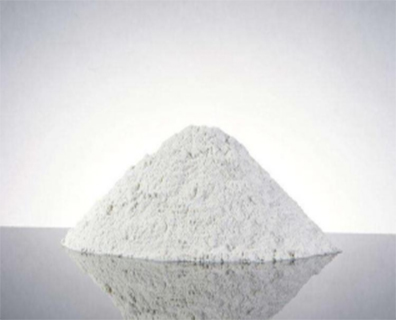What are the physical and chemical changes of non-metallic ore powder after ultra-fine crushing?

The ultra-fine pulverization process is not only a process of particle size reduction. When the material is crushed by mechanical force, the particle size reduction is accompanied by different changes in the crystal structure and physical and chemical properties of the pulverized material. This change is negligible for the relatively coarse crushing process, but for the ultra-fine crushing process, due to the long crushing time, high crushing strength and the particle size of the material is crushed to the micron level or smaller, these changes Occurs significantly under certain crushing processes and conditions.
Studies have shown that the above-mentioned mechanochemical phenomena will appear significantly or be detected only during the ultrafine pulverization or ultrafine grinding process. This is because ultra-fine crushing is an operation with high energy consumption per unit of crushed product, the strength of mechanical force is strong, the material crushing time is long, and the specific surface area and surface energy of the crushed material are large.
1. Changes in crystal structure
During the ultra-fine grinding process, due to the strong and persistent mechanical force, the powder material undergoes lattice distortion to varying degrees, the grain size becomes smaller, the structure becomes disordered, amorphous or non-crystalline substances are formed on the surface, and even Polycrystalline conversion.
These changes can be detected by X-ray diffraction, infrared spectroscopy, nuclear magnetic resonance, electron paramagnetic resonance and differential calorimetry.
2. Changes in physical and chemical properties
Due to mechanical activation, the physical and chemical properties of materials such as dissolution, sintering, adsorption and reactivity, hydration performance, cation exchange performance, and surface electrical properties will change to varying degrees after fine grinding or ultrafine grinding.
(1) Solubility
Dissolution rate of powder quartz, calcite, cassiterite, corundum, bauxite, chromite, magnetite, galena, titanite, volcanic ash, kaolin, etc. in inorganic acid after fine grinding or ultrafine grinding and solubility increased.
(2) Sintering performance
There are two main types of changes in the thermal properties of materials caused by fine grinding or ultrafine grinding:
One is that due to the increase in the dispersion of the material, the solid-state reaction becomes easier, the sintering temperature of the product decreases, and the mechanical properties of the product are also improved. For example, after dolomite is finely ground in a vibrating mill, the sintering temperature of refractory materials prepared with it is reduced by 375-573K, and the mechanical properties of the material are improved.
The second is that the change of crystal structure and amorphization lead to the shift of crystal phase transition temperature. For example, the transformation temperature of alpha quartz to beta quartz and cristobalite and that of calcite to aragonite are all changed by ultrafine grinding.
(3) Cation exchange capacity
Some silicate minerals, especially some clay minerals such as bentonite and kaolin, have obvious changes in cation exchange capacity after fine grinding or ultrafine grinding.
After grinding for a certain period of time, the ion exchange capacity and replacement capacity of kaolin both increased, indicating that the number of exchangeable cations increased.
In addition to bentonite, kaolin, and zeolite, the ion exchange capacity of others such as talc, refractory clay, and mica also changes to varying degrees after fine grinding or ultrafine grinding.
(4) Hydration performance and reactivity
The reactivity of calcium hydroxide material can be improved by fine grinding, which is very important in the preparation of building materials. Because these materials are inert or not active enough for hydration.
(5) Electricity
Fine or ultrafine grinding also affects the surface electrical and dielectric properties of minerals. For example, after impact crushing and grinding of biotite, its isoelectric point and surface zeta potential (Zeta potential) all change.
(6) Density
Natural zeolites (mainly composed of clinoptilolite, mordenite and quartz) and synthetic zeolites (mainly mordenite) were ground in a planetary ball mill, and the densities of the two zeolites changed differently.
(7) Properties of clay suspensions and hydrogels
Wet grinding improves the clay’s plasticity and dry flexural strength. On the contrary, dry grinding increases the plasticity and dry bending strength of the material in a short period of time, but tends to decrease with the prolongation of grinding time.
